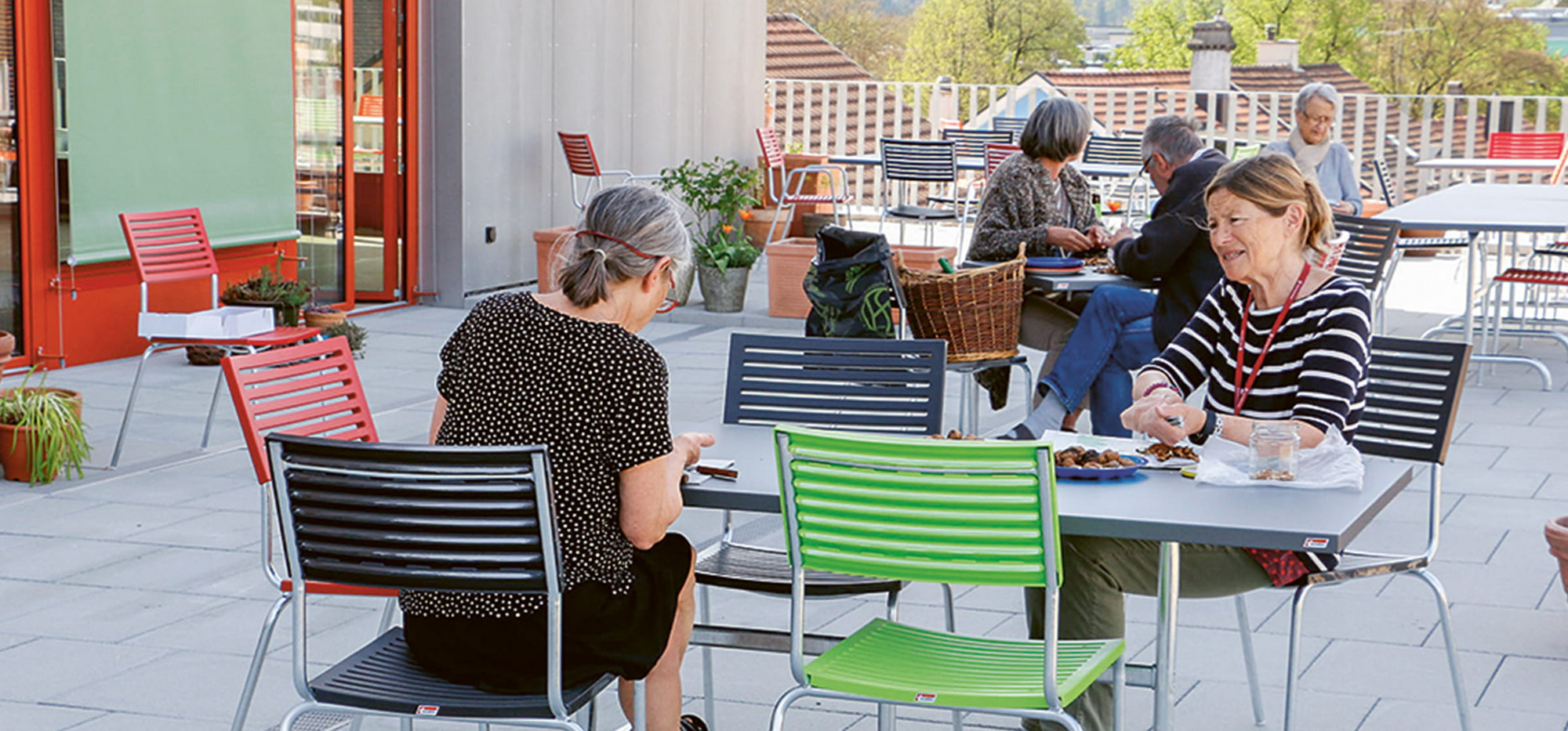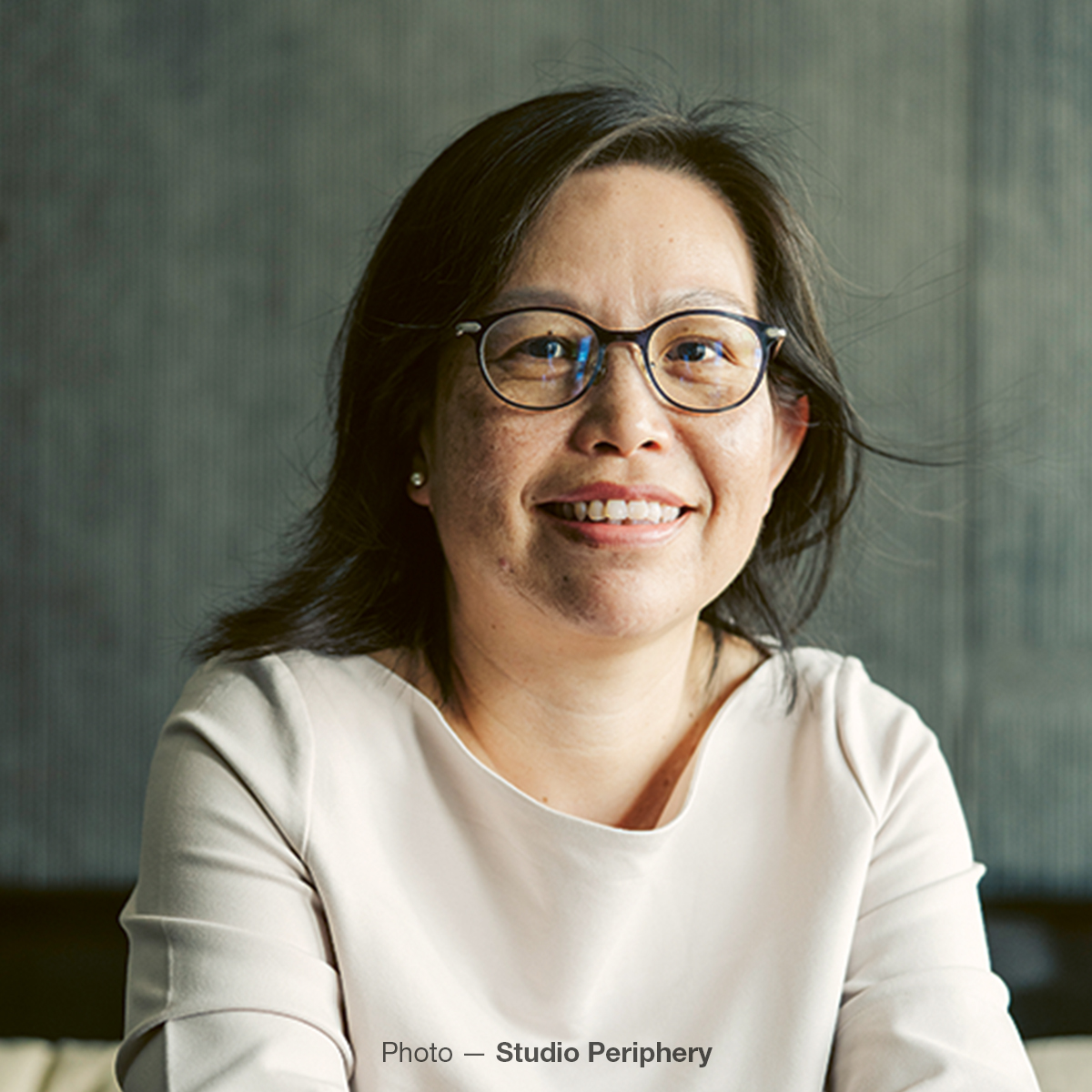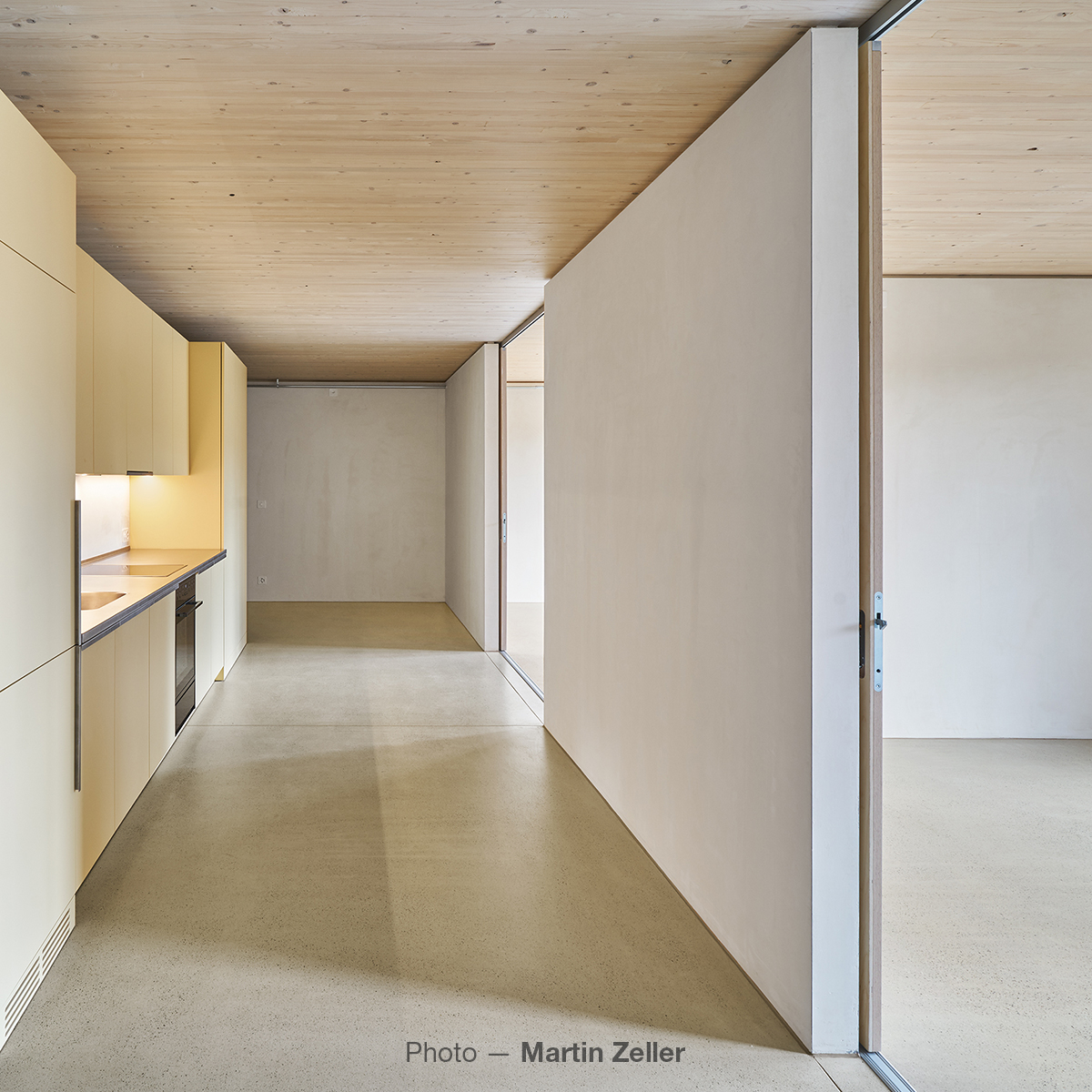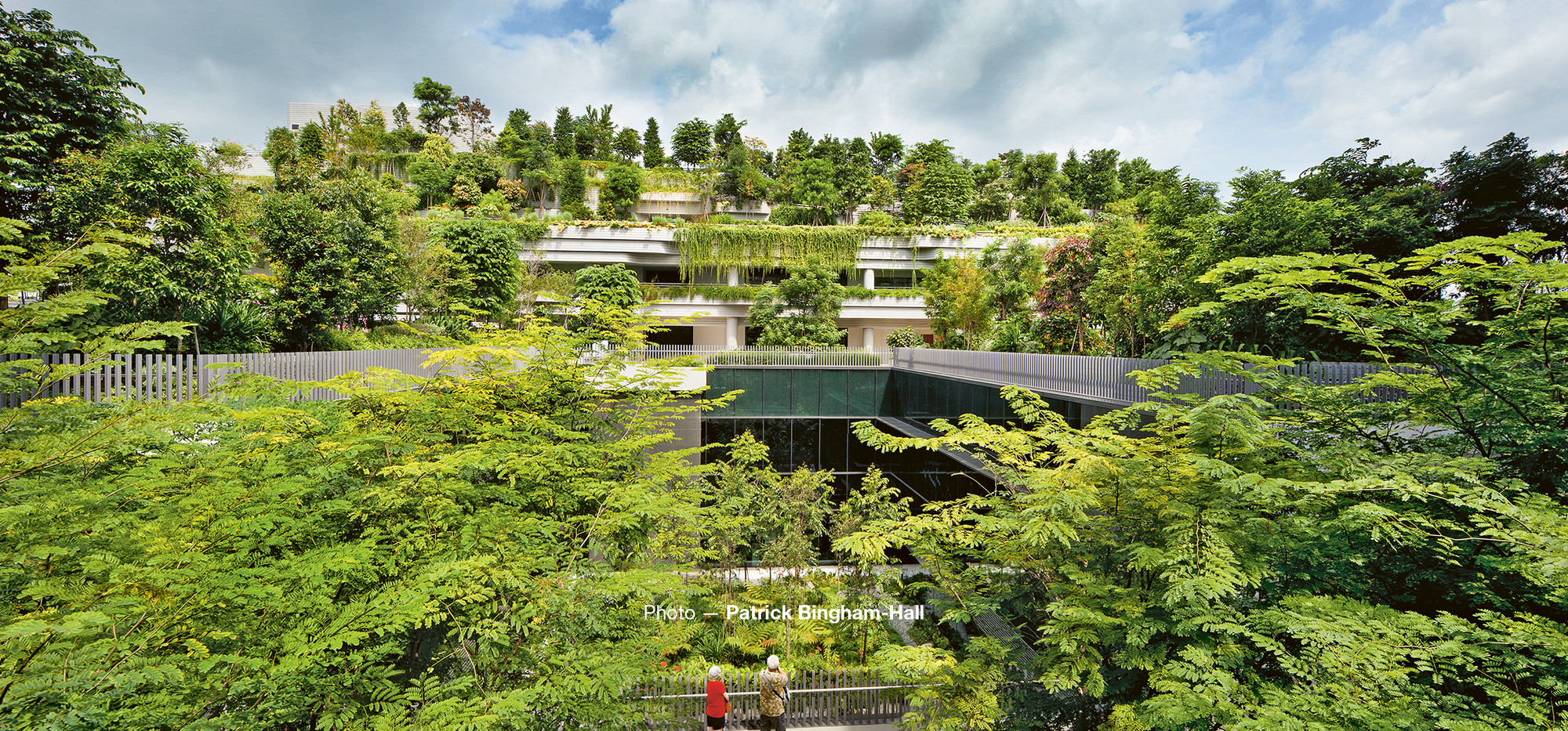Senior Living—a global megatrend
We are living longer and staying healthier too. People therefore want to live self-determined lives for as long as possible, and the demand for senior-friendly adaptations and new dwellings is on the increase worldwide. In order to flexibly adapt the use of living space to demographic change, it makes sense to build accessible housing.
It is strenuous to get up the stairs and to push open heavy doors, and many elderly people, even if they are still mobile, would certainly like to have non-slip flooring. At some point, it makes perfect sense to look for an alternative to a third-floor apartment without an elevator. Senior organizations recommend moving into a senior-friendly environment while you are still fit. There are many options—from converting your own home or moving into a generational housing development or a senior residence. Worldwide, demand exceeds supply. It is high time for a change.

Society is aging worldwide
By 2050, one in six people across the world will be over 65. That’s double of what it is today. Whereas old people used to live in their extended family until they died, family networks, in which children are regarded as life insurance, are eroding. Low birth rates contribute to the likelihood that by 2050 a 60-year-old Japanese woman will be left without any grandchildren. This development is to be expected in all industrialised countries. After Europe, North America and Japan, China as well as Taiwan, South Korea and Singapore will soon experience a massive demographic aging of society, too. The state cannot replace the family, it can only invest money in the care of the elderly.
Baby Boomers are open to new Forms of Living
Most retired people in Switzerland, but also in the Netherlands and Sweden, describe their financial situation as comfortable, with more than half of them being homeowners. Even the baby boomers with the highest birth rates, who will retire in the next few years, are mostly financially secure. Waiting for death in a drab nursing home is not an option for them. Instead, they can imagine “lifestyles that originated in the 1960s to 1980s” for their old age, as the Swiss Age Foundation notes.
In Switzerland, this includes intergenerational living, where senior citizens maintain their social contacts, including for example looking after grandchildren, keeping fit for longer,and even preventing dementia.
Globally, the trend is also towards the integration of assisted and independent senior living in communities. However, misconceptions about retirement living in large parts of the world are leading to resistance from seniors to these types of housing.
Common to all senior citizens’ housing estates are the specific demands on barrier-free accessibility. But senior living also requires appropriate service offerings and management. Because communal living is no less of a challenge for the elderly than it is for young people. It has been shown that pressure on residents to engage in joint activities has a counterproductive effect on living together. For a co-housing project to be successful in the longer term, much thought and care need to go into the organization.

Co-Housing works especially well in Cities
New, communal forms of living are gaining varying degrees of acceptance around the world. This is culturally determined and differs from region to region. However, one thing is true across the globe, and including Switzerland: Age-appropriate living has so far become established almost exclusively in agglomerations and cities. Satisfaction of senior citizens today depends less on the housing situation and more on the immediate surroundings, according to the “Age Report IV” published by “Age Stiftung”. This is the aspect where cities score with their cultural and social offerings.
Some years ago, co-housing experienced increased popularity in Switzerland. More recently though this has given way to a new trend: generational and cluster housing, as François Höpflinger, a renowned researcher on aging, reports. The reason: Younger seniors do not want to live with older ones.
Barrier-free Housing allows flexible Uses
The demand for housing for senior citizens follows the demographic development of regions and countries. According to a study by the United Nations, the world population will shrink by one billion between 2064 and 2100. In Europe, this trend is likely to occur earlier.
“In order to be able to respond flexibly to demographic changes, ageless housing concepts are in demand. Accessibility should therefore be the maxim of all building,” says François Höpflinger. That way, if demand shrinks, a retirement apartment can be converted into an office or a family apartment—and vice versa. Moreover, accessibility and aesthetics should go hand in hand.
Author: Philippe Welti

Senior housing can’t be exported 1: 1
An architect from Singapore and a Swiss gerontologist speak about aspects of senior living and the cultural differences that exist in that context.
Read the interview
Read more about "Inclusive Design" in our newsletter
Keep up-to-date with our current topics and the latest articles. Read about a project for senior living in Singapore and how we designed a barrier-free apartment in cooperation with a wheelchair user and an architect. Subscribe to our newsletter.
Subscribe now!
Age-appropriate apartments
The “Zusammenhalt” housing project compensates for small apartments with generous communal areas. The floor plans of the apartments can be transformed by sliding doors.
View reference projectOverview: Living arrangements in old age
Autonomy in age-appropriate environments
These exist all over the world and allow their residents the greatest possible freedom and independence in old age. They provide accessibility and an age-appropriate infrastructure with elevators, security systems, restaurants and a variety of leisure facilities. A supportive management that coordinates activities can be very helpful.
Not all alone at home
This is for older persons who require a moderate level of assistance and care while living independently in barrier-free apartments. Sometimes, it is relatives who provide the care. In addition, outpatient services from retirement and nursing homes, look in on a regular basis and are on call in any emergency.
Old and Young
Couples, singles and families of all ages all live under one roof. Each party has their own private apartment, with common rooms open to all residents. The idea behind this form of housing is to help each other and to facilitate encounters between the generations. However, in practice this cannot be enforced.
Living like in a hotel
These offer a high standard of living in apartments designed for the elderly. The rent includes a number of hotel-like services, such as meals in the attached restaurant, laundry and ironing. Individual living with many conveniences makes senior residences one of the most costly living arrangements for older people.
Intimacy at a distance
These are shared apartments where residents have the comfort of their own living room, bedroom and bathroom. These private quarters are grouped around a shared kitchen and a communal reception room or dining area. Living in cluster flats requires everyone to good high social skills in organizing life together.
Intergenerational contract
In this case, students room with senior citizens who have a spare room. Students “pay” the rent for their room by helping the host with household chores, shopping, cleaning or cooking. The rent is 1 hour of work per square metre of room size per month. This project initiated by Swiss “Pro Senectute” has varying degrees of success.
The Classics
Senior citizens in need of care receive full medical and social care here. Relinquishing most personal
belongings and some of one’s privacy are compensated by the interpersonal relationships and the
level of security. Homes try their best to make residents feel at home.
